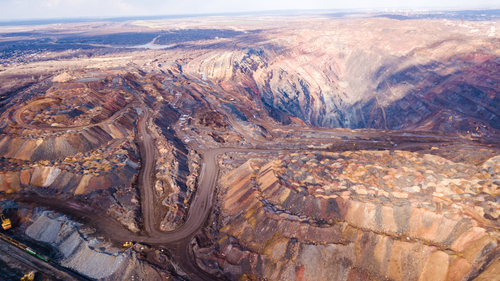

Summary
- The iron ore rally has continued through the holidays as steel mills rebuild stocks in anticipation of renewed building activity in 2023.
- The rally faces several challenges, including China’s new iron ore buying consortium, rising Covid infections and uncertainty about the zero-Covid policy, and higher imports.
Iron ore prices continued to surge during the holiday season, hitting USD117.50/metric ton recently.
This article is only available to Macro Hive subscribers. Sign-up to receive world-class macro analysis with a daily curated newsletter, podcast, original content from award-winning researchers, cross market strategy, equity insights, trade ideas, crypto flow frameworks, academic paper summaries, explanation and analysis of market-moving events, community investor chat room, and more.
Summary
- The iron ore rally has continued through the holidays as steel mills rebuild stocks in anticipation of renewed building activity in 2023.
- The rally faces several challenges, including China’s new iron ore buying consortium, rising Covid infections and uncertainty about the zero-Covid policy, and higher imports.
Iron ore prices continued to surge during the holiday season, hitting USD 117.50/metric ton recently. The move builds on the sharp rally that started in late November and early December following moves by the government to support the troubled property market and ease zero-Covid restrictions (Chart 1).
Steel mills were apparently moving aggressively before the New Year holiday to stockpile iron ore. This was in anticipation of a resumption of building activity and fresh demand for steel in the spring and summer as developers access funds to complete stalled projects. Imports are still at the lower end of the range of recent years, and inventories are relatively low.
This rally was a bit surprising given the chaotic easing of Covid restrictions and a move by the government to form an iron ore buying collective. The China Resources Mineral Group (CRMG) was formed last summer to purchase iron ore on behalf of China’s 20 largest steel producers. There is some debate whether CRMG can push prices much lower than would otherwise prevail based on supply and demand fundamentals. China accounts for over 75% of global iron ore imports, so it clearly has bargaining power.
There are other reasons why this rally may be short-lived.
Global demand for iron ore has softened in 2022 under the twin pressures of high inflation and central banks raising rates to slow economic growth and inflation. And China’s steel market is highly fragmented, as the top 20 companies only produce about 40% of total steel supply, which should give mining companies some leverage.
In addition, China’s abrupt end of the zero-Covid policy has caused infections to spike and rising uncertainty about the timing and extent of an economic reopening. Even as property developers resume work on stalled projects, demand for property is soft and may not start to recover until the economy improves, incomes rise, and, crucially, property prices start to recover. That may inhibit developers from rushing to complete projects, keeping demand for iron ore and steel in check.
Lastly, imports may pick up in anticipation of the reopening as well as the dry baltic index. The Baltic Dry Index is up 35% from the November low, and the subindex for the Capesize class used to transport iron ore has doubled off the November low.

